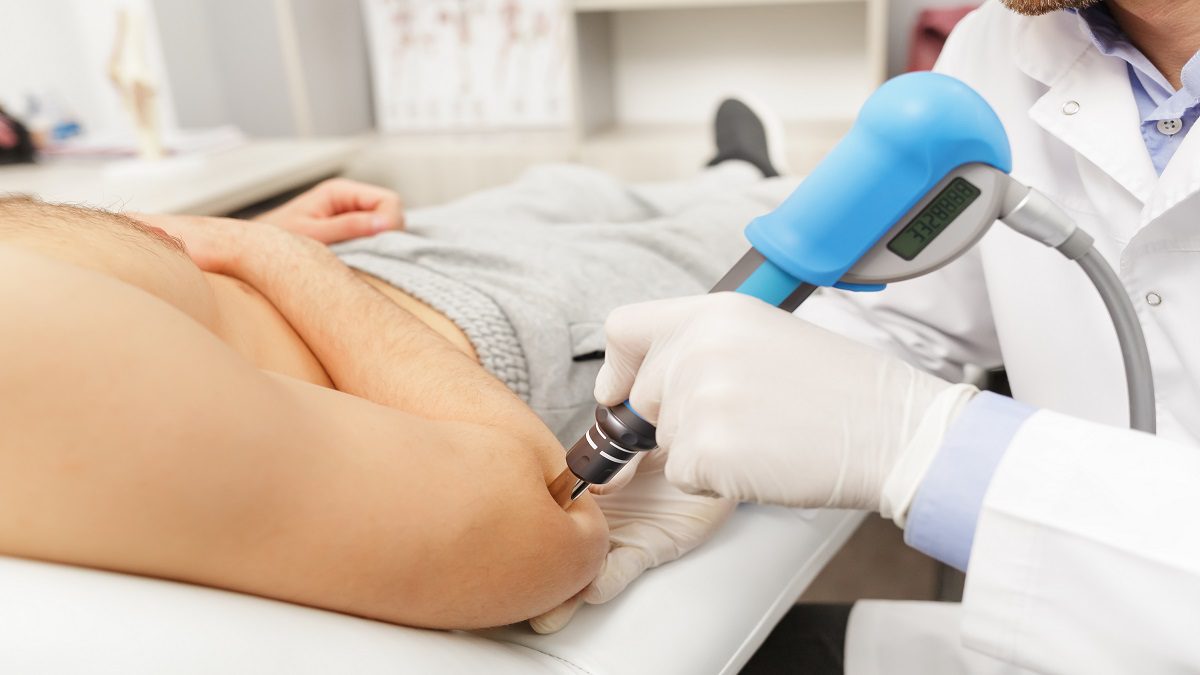Treatment of tennis elbow
Conservative treatment
Most cases of tennis elbow are treated without surgery. Some of the common tennis elbow treatments include one or more of the following:
- ACTIVITY MODIFICATION: Activities that worsen pain need to be avoided or minimized. As an alternative for those who play tennis or other racket sports, they may try changing their stroke or the grip size on the racket. Continuing to use the affected hand and arm, within reason, is generally recommended. As long as an activity does not cause pain, it can usually be continued. Mild discomfort is not generally harmful, but continuing activities that cause pain will prolong recovery from the tennis elbow and needs to be avoided.
- COLD APPLICATIONS: Cold therapy can be beneficial for the tennis elbow because it can decrease inflammation and relieve pain. The elbow should be iced after using the elbow and several times daily for up to half an hour. An ice pack can be used, or the area can be rubbed with an ice cube.
- STRENGTHENING AND STRETCHING EXERCISES: Exercises to stretch and strengthen the affected tendon and muscle is one of the best treatments for the tennis elbow. Exercise usually starts with a gentle range of the wrist and elbow motion and gradually advances, combining stretching and strengthening. Physicians can recommend a program of exercises or, in more severe cases of tennis elbow, physical therapy may be recommended.
- ELBOW STRAPS: Some people with tennis elbow find elbow straps to be effective in helping to ease the pain. Several different kinds are available. They are worn about an inch below the elbow to relieve stress from the tendon. The strap is worn during activity but should not be used as the only form of treatment. Instead, they should be a supplement to strengthening and stretching exercises.
- WRIST BRACES: Wrist braces are worn to support the elbow muscles and are not used routinely, but some doctors recommend them for severe tennis elbow pain if other treatments are ineffective. Typically, they are worn during sleep, but sometimes they are also used during the day.
- EXTRACORPOREAL SHOCK WAVE THERAPY: This tennis elbow treatment delivers sound waves to the area affected by the tennis elbow. The sound waves produce “microtrauma” that stimulates the natural healing process of the body. The use of shock wave therapy is controversial, but some sources have shown it can provide positive results.
Tennis elbow medications
Among the medications for tennis elbow treatment, doctors most commonly prescribe the following:
- Nonsteroidal anti-inflammatory drugs (NSAIDs) can provide pain relief as well as help reduce inflammation in the tennis elbow. These medications include naproxen, aspirin, and ibuprofen. Doctors sometimes prescribe stronger anti-inflammatory drugs for more severe cases of tennis elbow. Acetaminophen is an over-the-counter pain reliever, but it does not help reduce inflammation.
- Cortisone shots: If the tennis elbow pain is severe and other treatments are ineffective, injections of corticosteroids might be considered. Cortisone is given by injection directly into the inflamed tendons to decrease inflammation. Following the injection, it is usually recommended that anti-inflammatory medications and icing the area be continued. Sometimes more than one injection may be needed for the tennis elbow.
Tennis elbow surgery
If the symptoms of tennis elbow don’t resolve within 6 to 12 months of more conservative therapies, surgery might be recommended. Most operative procedures for the condition include removing the damaged muscle and the reattachment of healthy muscle to bone. The operation performed depends on many factors, including the severity of the tennis elbow, the patient’s overall health, and the patient’s wishes. Therefore, risks and outcomes are discussed with patients prior to any surgical procedure.
OPEN SURGERY
The procedure most commonly used to repair tennis elbow is open surgery. This is typically outpatient surgery, and an overnight hospital stay is not usually required. In this procedure, an incision is made over the elbow joint.
ARTHROSCOPIC SURGERY
Tennis elbow is sometimes repaired using micro or arthroscopic surgery. This procedure requires much smaller incisions, and tiny instruments are used with a fiber-optic camera. This is also performed as an outpatient procedure.
SURGICAL RISKS
As with all surgeries, there are some risks associated with tennis elbow surgery. These include:
- Infection
- Damage to the blood vessels or nerves
- Loss of muscle strength
- Decreased flexibility
- The need for lengthy rehabilitation
- The need for additional surgery
Rehabilitation
After surgery for the tennis elbow, the affected arm may be placed in a splint for about a week. After about a week, the splint will be removed, and exercise will begin. Exercises will focus on stretching the elbow and restoring flexibility. Exercises to strengthen the muscles will follow approximately two months after the operation. Athletic activities are typically not resumed for at least four months post-op. Most of the time (80-90%), tennis elbow surgery is successful, but the loss of strength is not uncommon.
















Leave a Reply
You must be logged in to post a comment.